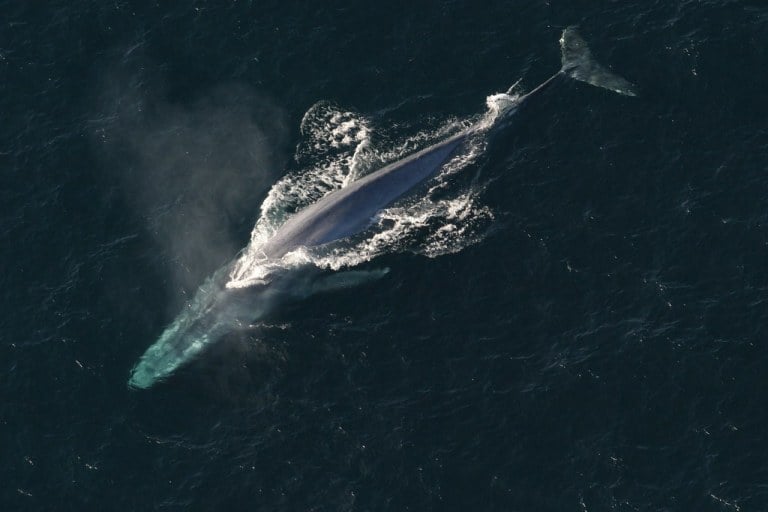A study led by researchers affiliated with Stanford’s Goldbogen Lab found that whales are consuming unprecedented amounts of plastics, with blue whales consuming as much as 10 million pieces of microplastics per day.
The study, which was published Tuesday in Nature, is the first of its kind to estimate microplastic consumption among Earth’s largest whales with direct measurements of feeding behaviors.
“Whales are the largest animals to have ever lived so they have outsized impacts on their ecosystem,” wrote oceans associate professor Jeremy Goldbogen, who leads the Goldbogen Lab, in an email to The Daily.
Microplastics are pieces of plastic less than 5 millimeters long that typically form as larger plastic items deteriorate in water. Scientists are still investigating their health effects in humans, but studies have found negative effects on the growth, reproduction and feeding behavior of fish and other marine life. Microplastics are consumed by krill and make their way up the food chain, including into our own diets.
To estimate how much plastic whales are consuming on a daily basis, members of the Goldbogen Lab in the Doerr School of Sustainability’s new oceans department used data from feeding habits and prey of three species of baleen whales — fin, humpback and blue — along with models of plastic density in our oceans and small aquatic life.
They found that whales consume between 200,000 and 10 million pieces of microplastics per day, with estimates varying based on the whales’ size, feeding behavior and diet.
Whales mostly ingest plastic from their diet of krill and small fish, and to a much lesser extent from the water they filter, according to the study. Blue whales consume an estimated 10 million pieces, fin whales consume about six million pieces and humpbacks consume between 200,000 and three million pieces per day, depending on their diets.
After taking into account the whales’ size, the researchers found that most differences in plastic consumption among whales came from differences in prey. Humpback whales that eat primarily krill ingest as much as five times more microplastic than their fish-eating counterparts, according to the study.
The authors encouraged further study in how the consumption of microplastics changes the nutrient density of the krill and fish that the whales consume, which could help scientists understand the effects of plastics on whales’ health and how ocean pollution affects marine life at a larger scale.
“We do not yet know whether this impacts their health, but it does demonstrate that they are likely sentinel species, or biological monitors, of ocean pollution because they are long lived marine mammals,” Goldbogen wrote. “By studying different aspects of their anatomy, like the chemical make up of their baleen plates as they grow, we can assess the dynamics of ocean pollution.”
The study was led by Shirel Kahane-Rapport Ph.D. ’20, a former member of Goldbogen’s lab who is now a postdoctoral scholar at California State University, Fullerton. Kahane-Rapport worked in collaboration with other members of the Goldbogen Lab, NOAA, UC Santa Cruz and the Cascadia Research Collective. The Goldbogen Lab, which is located at the Hopkins Marine Station, uses biologging tags, drones and other technologies to examine how whales feed and grow.
The lab is part of the department of oceans, which was created with the Doerr School of Sustainability in September. The department, according to the sustainability school website, is bringing together an interdisciplinary group of researchers in the physical and social sciences to address sustainability and discovery in our oceans.
Matthew Savoca, a postdoctoral scholar in the Goldbogen Lab who co-authored the study, told The Daily that this research worked between many disciplines such as ecology, biomechanics, oceanography and behavioral biology, which are usually distributed around different departments such as biology and earth systems.
“I think the exciting thing about the oceans department is that we bring all these different disciplines under one roof and hopefully that would spur on these sort of interdisciplinary collaborations that are going to be really important to figure out sustainability challenges moving forward,” Savoca said.
